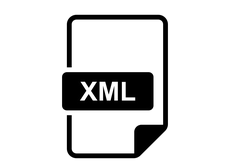
What is XML?
XML stands for eXtensible Markup Language. It is a generic markup computer language. Markup means that this language is written using tags like HTML. Unlike HTML, tags are not predefined, rather they are created by the user. Hence the term “generic”. Its purpose is to facilitate the exchange of information on the Internet. Thanks to the unlimited creation of new tags, XML is in a way an improved version of HTML.
It was created in 1998. It stems from the SGML meta-language developed earlier in the 1980s, to represent structured documents. Due to, among other things, the complexity of SGML and its difficult extensibility, XML was adopted with a syntactic constraint in order to facilitate its implementation.
Why you need to use XML?
The purpose of XML is to facilitate the exchange of data between machines which means allowing the transit of information between platforms that do not have the same language. let’s imagine for instance, the case of data transfer between two non-interfaced applications. Using it will thus avoid tedious and expensive interface development. Another interesting point about it, is the way data is described. It is understandable by humans as well as by machines, distinguishing it from HTML. Ultimately, it is preferred in automated processes. For the design of a website, it would be better to choose another language like HTML, JavaScript or PHP.
XML syntax is based on a structured character string. It takes the form of a tree whose trunk serves as a support for different types of elements such as texts, elements, etc. XML beginners can sometimes find it difficult, because the slightest error in the form takes the document out of XML format and breaks the entire processing chain.
This language is therefore:
- A markup language;
- Understandable by men and machines;
- Standardized, simple, extensible and configurable so that any kind of data can be described;
- Compatible with the web so that data exchange can be done easily through the Internet.